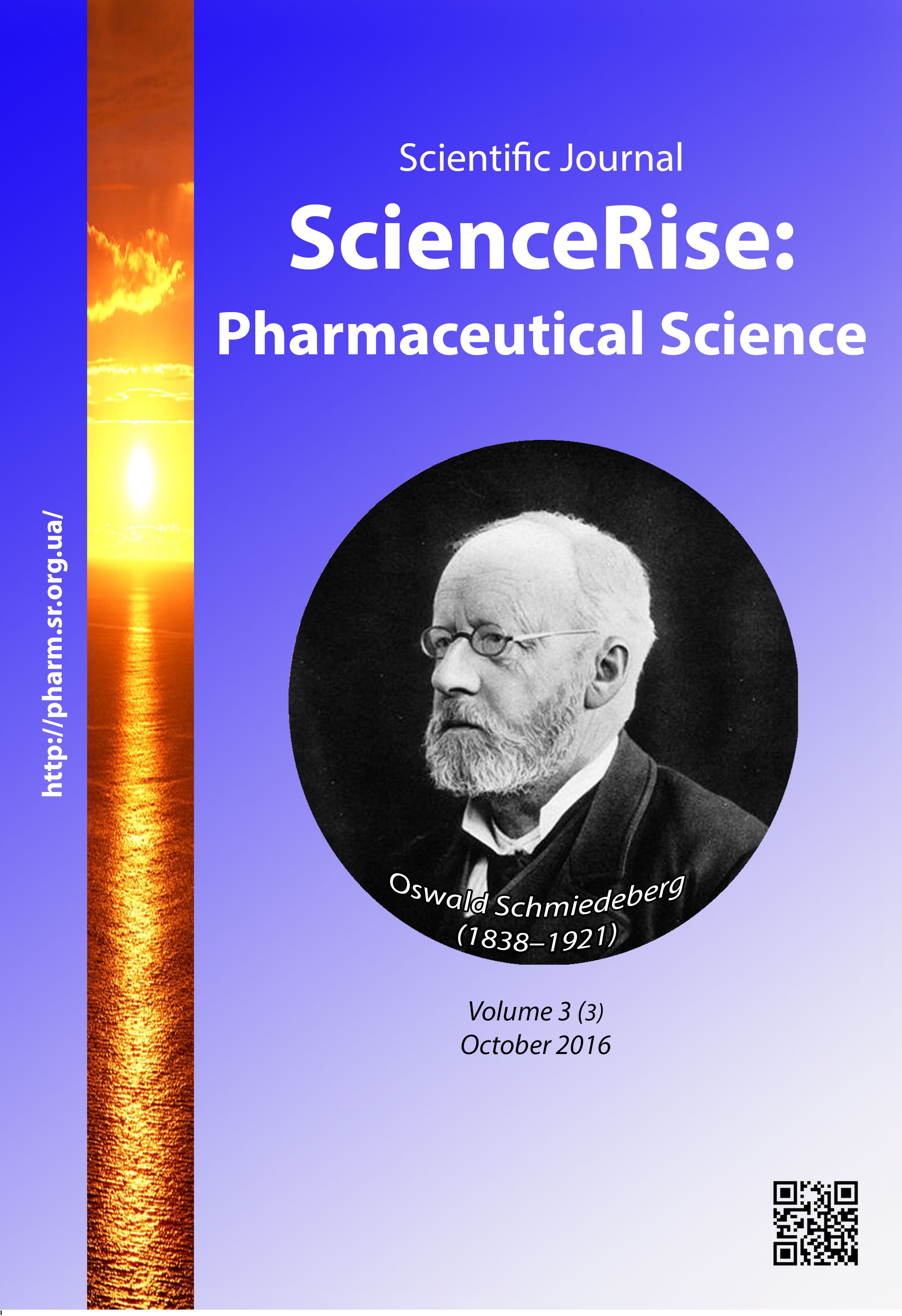Validation of method for quantitative determination of phenobarbital in the sublingual tablet “Corvalol” at "Dissolution" test
DOI:
https://doi.org/10.15587/2519-4852.2016.81301Keywords:
validation, specificity, correctness, precision, robustness, chromatography, dissolution, Phenobarbital, sublingual tabletsAbstract
Validation of method for quantitative determination of Phenobarbital in the sublingual tablet “Corvalol” at “Dissolution” test was carried out by high performance liquid chromatography method.
Aim. To validate the method for quantitative determination of Phenobarbital at "Dissolution" test in accordance with the State Pharmacopoeia of Ukraine (SPhU) requirements; to prove by experimental research that the method allows reliably monitoring Phenobarbital content in the sublingual tablet “Corvalol”.
Methods. HPLC method was used for research in accordance with the SPhU requirements.
Results. The study of specificity criteria of method for Phenobarbital quantitative determination, its correctness, precision, linearity and robustness was carried out. It was determined, that the method meets the SPhU requirements on the main validation parameters. Results of research were used for development of methods for quality control of sublingual tablets “Corvalol”.
Conclusion. Validation of the method for quantitative determination of Phenobarbital in the remedy “Corvalol” sublingual tablets at "Dissolution" test in accordance with the State Pharmacopoeia of Ukraine (SPhU) requirements was carried out. It has been proven that the method meets the SPhU requirements on the specificity, correctness, precision, and robustness in the range of 60–120 % of the nominal content. The obtained data were used for development of methods for quality control of the remedy “Corvalol” sublingual tablets
References
- Seredinskaya, N. N., Borshevskaya, M. I., Mokhort, N. A., Kirichok, L. M. (2012). Corvalol: efficacy and safety are confirmed – mean life of the drug continues. Part I. The prospect of the creation of new dosage forms and the feasibility of their use (preclinical studies). Experimental and clinical medicine, 4, 22–29.
- Fu, Y., Yang, S., Jeong, S. H., Kimura, S., Park, K. (2004). Orally Fast Disintegrating Tablets: Developments, Technologies, Taste-Masking and Clinical Studies. Critical Reviews in Therapeutic Drug Carrier Systems, 21 (6), 433–476. doi: 10.1615/critrevtherdrugcarriersyst.v21.i6.10
- Nagar, P., K. Singh, I. Chauhan et. al. (2011). Orally disintegrating tablets : formulation, preparation techniques and evaluation. Journal of Applied Pharmaceutical Science, 01 (04), 35–45.
- Debjit, B., Chiranjib, B., Krishnakanth, R. et. al. (2009). Fast Dissolving Tablet: An Overview. Journal of Chemical and Pharmaceutical Research, 1 (1), 163–177.
- Abdelbary, G., Eouani, C., Prinderre, P., Joachim, J., Reynier, J., Piccerelle, P. (2005). Determination of the in vitro disintegration profile of rapidly disintegrating tablets and correlation with oral disintegration. International Journal of Pharmaceutics, 292 (1-2), 29–41. doi: 10.1016/j.ijpharm.2004.08.019
- Cirri, M., Rangoni, C., Maestrelli, F., Corti, G., Mura, P. (2005). Development of Fast-Dissolving Tablets of Flurbiprofen-Cyclodextrin Complexes. Drug Development and Industrial Pharmacy, 31 (7), 697–707. doi: 10.1080/03639040500253694
- Grizodub, A. I., Leontiev, D. A., Denisenko, N. V., Podpruzhnikov, Y. V. (2004). A standardized procedure for the validation of quantitative methods of analysis of drugs by standard. Farmakom, 3, 3–17.
- State Pharmacopoeia of Ukraine (2001). Kharkiv: RIREH, 556.
- Laboratory glassware. Graduated pipettes. Chep. 2. Graduated pipettes without a specific waiting time: GOST 29228-91 (1992). Moscow: Publishing House of Standards, 9.
- State Pharmacopoeia of Ukraine. Amendment 2 (2008). Kharkiv: State Enterprise “Scientific-expert Pharmacopoeia Center”, 620.
Downloads
Published
How to Cite
Issue
Section
License
Copyright (c) 2016 Иларион Александрович Омельченко, Татьяна Григорьевна Ярных, Геннадий Ильич Борщевский, В. А. Коноваленко

This work is licensed under a Creative Commons Attribution 4.0 International License.
Our journal abides by the Creative Commons CC BY copyright rights and permissions for open access journals.








